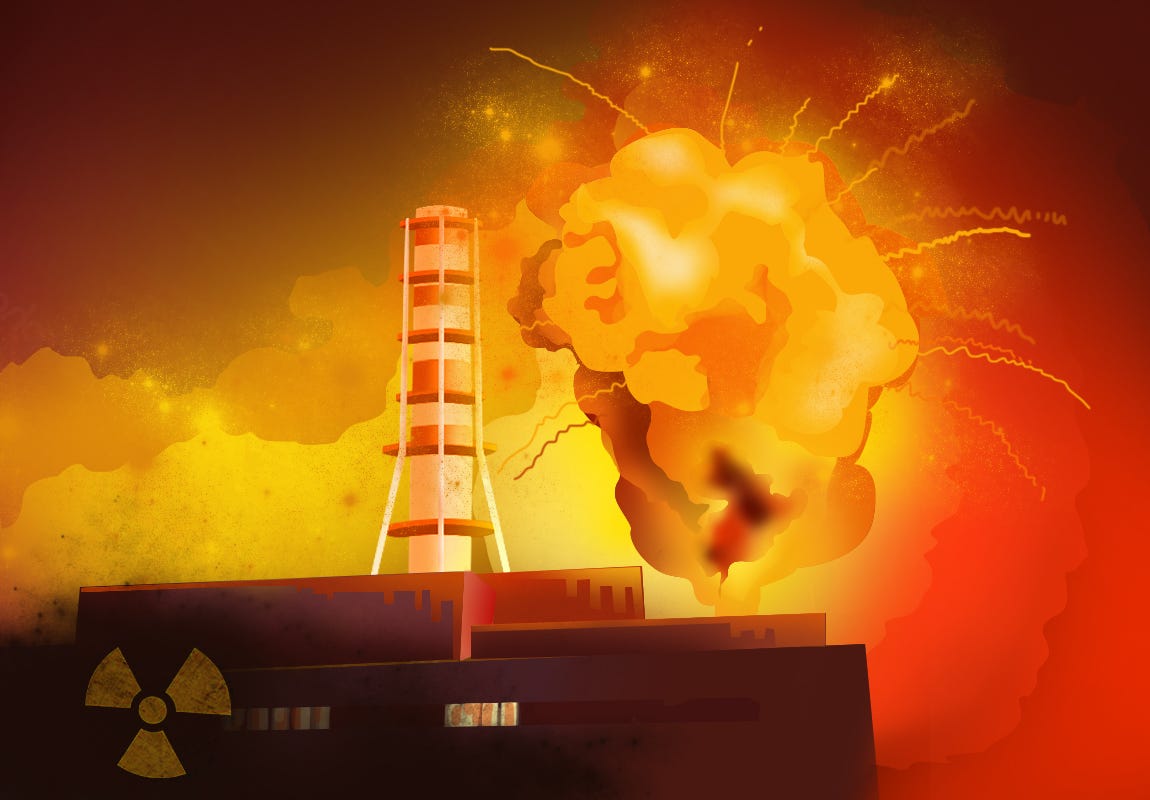April 26, 1986 is one of the darkest days in the history of mankind. It is the day the worst nuclear accident in history unfolded – the Chernobyl nuclear disaster. The nuclear disaster had led to the abandonment of an entire city as it became uninhabitable for every living creature.
What is Chernobyl?
The Vladimir Lenin Nuclear Power Plant, commonly known as the Chernobyl nuclear plant, was located in Pripyat near the northern Ukrainian town of Chernobyl, then a part of the Soviet Union. Designed and built during the 1970s and 80s, Chernobyl was the first-ever nuclear power plant in Ukraine and the third in the Soviet Union. It consisted of four reactors, each capable of generating 1,000 megawatts of electric power.
The city of Pripyat, located just two miles from the plant, was built in 1970 as one of the Soviet Union’s ‘atomgrads’ – a closed town where the public was restricted and only authorised people were allowed to settle. The only residents of Pripyat were the workers of the power plant. Pripyat was later announced a city in 1979, and the population increased to around 50,000 by 1986.
What happened in Chernobyl?
According to the World Nuclear Organisation, “the April 1986 disaster at the Chernobyl nuclear power plant in Ukraine was the product of a flawed Soviet reactor design coupled with serious mistakes made by the plant operators. It was a direct consequence of Cold War isolation and the resulting lack of any safety culture.”
On April 26, 1986, the crew at Chernobyl reactor number 4 were performing a test to determine how long turbines would spin and supply power to the main circulating pumps if a loss of the main electrical power supply occurs. The experiment, performed earlier the previous year, was a failure.
The temperature inside the reactor core reached up to 4,650 degrees Celsius, which can be compared to the 5,500 degrees Celsius temperature on the surface of the Sun!
The crew turned down the power of the reactor below what the operating protocol allowed. The power went way too low, and things started getting out of control. The measures taken to bring the power back to normal level resulted in a disastrous outcome. The sudden fluctuations inside the reactor triggered an uncontrollable chain reaction, leading to a massive power surge. Efforts to shut down the reactor also failed. What followed was the worst nuclear accident in history.
The temperature inside the reactor core reached up to 4,650 degrees Celsius, which can be compared to the 5,500 degrees Celsius temperature on the surface of the Sun! The first explosion occurred at 1:23 a.m., which blasted off the 1,000-tonne steel-and-concrete cover plate of the reactor, followed by a second explosion, a much bigger one that threw out radioactive fragments all around the area and into the atmosphere.
The Soviet Union tried to cover up the event. However, Swedish monitoring stations reported high levels of wind-transported radioactivity and demanded an explanation. The Soviet government finally admitted the accident and it became headline news all around the globe. The deputy chief engineer of the Chernobyl Nuclear Power Plant, Anatoly Dyatlov, who supervised the experiment, was sentenced to prison for not following the safety protocols.
Effects of Chernobyl accident
The immediate effect of the explosion was the death of two workers of the power plant. Twenty-eight others, including the firefighters and emergency clean-up workers, died in the next three months from acute radiation sickness caused by direct exposure to the highly radioactive materials. It is estimated that the total number of fatalities directly or indirectly related to the explosion is around 4,000.
According to sources, around 335,000 people were relocated eventually, establishing a 19-mile-wide ‘Chernobyl exclusion zone’ around the reactor.
The accident caused uncontrolled radioactive release into the environment for about 10 days. The most dangerous elements among them were iodine, strontium, and caesium. To extinguish the fire and limit the release of radioactive particles, about 5,000 tonnes of sand, clay, dolomite, and boron were dropped continuously onto the burning core by helicopter till day 10. Toxic fumes were carried by the wind, reaching as far as Sweden, France and Italy, and thousands of people were exposed to high levels of radiation.
On April 27, 36 hours after the explosion, all settlements within 30 kilometres were evacuated, including Pripyat, Chernobyl and 94 other villages.
According to sources, around 335,000 people were relocated eventually, establishing a 19-mile-wide ‘Chernobyl exclusion zone’ around the reactor. By the time of evacuation, many residents were showing symptoms of radiation sickness such as vomiting, headache and dizziness. In the following years, cancer cases were reported in people who were exposed to high levels of radiation.
The radioactive emissions also caused serious impacts on the environment and wildlife of the area. Mutations occurred in plants and animals, causing changes in the leaves, and led to the births of animals with physical deformities. Emergency workers named ‘liquidators’ were recruited to the area to clean up the reactor premises and the surrounding area. The clean-up workers, numbering around 600,000, cut down the trees and even buried the top layer of soil in the exclusion area.
Reactor number 4 was sealed in a concrete sarcophagus to contain the remaining radiation. A new arch frame structure called the New Safe Confinement (NSC), covering the entire fourth reactor, was built and put in place by 2017.
The Chernobyl nuclear power plant was officially decommissioned in 2000, nine years after the fall of the Soviet Union.
Chernobyl today
Chernobyl now is abandoned and mostly a ghost town where the only inhabitants are wild animals. The place is now filled with a variety of wildlife such as wolves, bears, deer, eagles, lynx, beaver, elk and others. They survived the disaster and flourished without the interference of humans.
Today, thousands of tourists from all around the world visit Chernobyl. The Chernobyl disaster will always remain as a stark reminder of the dangers of nuclear power plants, and how even a casual negligence can lead to disastrous long-term consequences.
Now put on your thinking hats and think about the following questions for a couple of minutes. As a teacher, how do you describe the dangers of nuclear power plants to your students? In your opinion, what are the reasons for Chernobyl nuclear disaster? Do you think that the cold war paved the way for this disaster?
Write down your thoughts and discuss them with your students, children and your colleagues. Listen to their views and compare them with your own. As you listen to others, note how similar or different your views are to others’.
Thank you for listening. Subscribe to The Scando Review on thescandoreview.com.
Happy Teaching!













Chernobyl: A permanent reminder to the human race